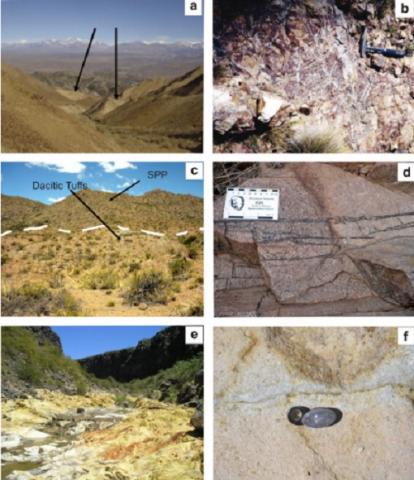Anabel L.R. Gómez, Nora A. Rubinstein, Víctor A. Valencia
2 015
Chemie der Erde - Geochemistry, Volume 75, Issue 1, March 2015, Pages 89-104
The gondwanan magmatism in the San Rafael Massif, known as Choiyoi Magmatic Cycle, was emplaced during the inception of a magmatic arc setting during the early Permian. Two different sections can be differentiated in this volcanic sequence. The lower section (∼281 up to ∼265 Ma) consisting of andesites and dacitic to low-silica rhyolitic ignimbrites has geochemical characteristics that indicate a subduction zone setting. The upper section (∼265 up to ∼252 Ma) composed of rhyolitic ignimbrites and lava flows, dacitic to rhyolitic subvolcanics and alkalic basaltic andesites has geochemical characteristics transitional between subduction and continental intraplate settings. Several Cu–(Mo) porphyry deposits are genetically linked to the lower section (Infiernillo, San Pedro and La Chilca-Zanjón del Buitre). In this paper, we discussed the petrogenesis of the magmatism linked to the porphyry deposits from the San Rafael Massif. The petrogenetic analysis suggests that the lower section was produced in a thickened crust resulting in an adakite-like signature magmatism. The U/Pb LA-ICP-MS age of magmatic zircons from an intrusive associated to the San Pedro porphyry (263.1 ± 4.2 Ma) allowed confirming that the emplacement of Cu–Mo porphyry deposits in the San Rafael Massif occurred during the change in the geodynamical conditions from a transpressive to a transtensive tectonic regime.

